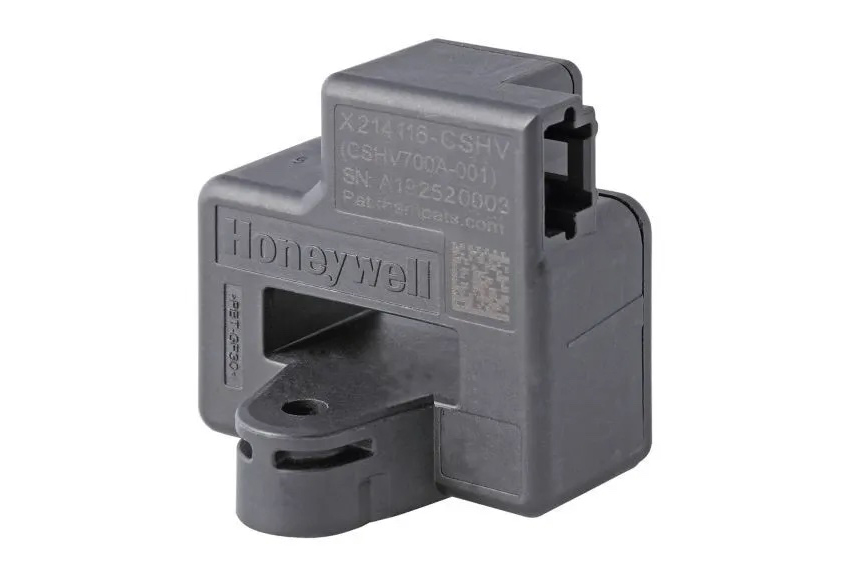
Sponsored by TTI.
Whether or not for the BMS or motor management, listed here are the important thing specs to grasp when
sourcing these crucial EV elements.
Electrical autos proceed to develop in reputation and market share, and electrical present is the gasoline of the long run. Present sensors are a crucial part of in the present day’s EVs, serving two main functions in keeping with Ajibola Fowowe, international providing supervisor at Honeywell.
“The battery administration system (BMS) makes use of present sensors, together with different sensors such because the voltage and temperature sensors, to watch the state of cost and general well being of the battery pack. The opposite use for present sensors is in motor management, the place it’s relied on to shortly detect and isolate a fault within the electrical drive,” mentioned Fowowe.
Whatever the use case, there are a number of concerns EV engineers should perceive when deciding on among the many many out there present sensors. Right here’s what it is advisable know.
Kinds of EV present sensors
There are several types of present sensors that every have benefits and drawbacks for EV functions.
Closed loop present sensors
Closed loop present sensors have a suggestions system for improved measurement accuracy. A magnetic core concentrates the magnetic discipline generated by the circulate of present and offers a proportional voltage to the quantity of present detected within the core. This permits the sensor to generate a exact present measurement. Due to their excessive accuracy and stability, closed loop sensors are effectively fitted to use within the BMS.
The Honeywell CSNV 500 (pictured above) is a closed loop present sensor rated for a main present measurement vary of ±500 amps of direct present. The CSNV 500 encompasses a proprietary Honeywell temperature compensation algorithm with digital CAN output, to offer excessive accuracy readings inside ±0.5% error over the temperature vary of -40⁰ to 85⁰ C for strong system efficiency and reliability.
Open loop present sensors
Open loop present sensors function on the precept of magnetic induction. They include a main winding, by means of which the present travels, and a secondary winding that measures the induced voltage. Open loop sensors require much less further electronics and processing in comparison with closed loop sensors, leading to quicker response occasions. Nonetheless, they require further calibration as a result of they’re extra susceptible to variations in warmth and magnetic discipline. This implies they’re additionally much less correct — reaching roughly 2% error of the first readings.
The quick response time of open loop present sensors makes them best for motor management features. Motor management functions don’t require the identical stage of precision because the BMS, so the lack of accuracy in comparison with a closed loop or flux gate sensor isn’t crucial.
The Honeywell CSHV line of open loop sensors have a spread of 100 amps to 1,500 amps, and their response occasions are as quick as six microseconds. They’re utilized in fault isolation and fault detection, in addition to controlling motor pace. They can be utilized in battery administration methods that don’t require very excessive accuracy, akin to in hybrid electrical autos. These sensors use AEC-Q100 certified built-in circuits to satisfy prime quality and reliability necessities.
The Honeywell CSHV sequence open loop sensor
Honeywell’s CSNV 1500 has each closed loop and open loop performance. This permits the sensor to satisfy an accuracy requirement of 1%, and is designed for functions that require excessive accuracy. The CSNV 1500 is used for comparable EV functions because the CSNV 500, in addition to stationary power storage methods and industrial operations.
Flux gate present sensors
Flux gate present sensors measure adjustments within the magnetic flux of a present because it passes by means of a magnetic loop, from which it might derive present measurements. The Honeywell CSNV 700 is designed for functions that fall between 500 A and 1,000 A necessities. It has a greater zero-offset and better sensing vary than 500 amps sensors—nevertheless it additionally has increased energy consumption than a closed loop sensor. The CSNV 700 has comparable accuracy score because the CSNV 500, at 0.5%, and it additionally makes use of AEC-Q100 certified built-in circuits.
As with closed loop sensors, the flux gate sensor is greatest utilized in BMS settings that require excessive accuracy. When utilizing flux gate sensors, nevertheless, engineers must be conscious of their increased energy necessities, which may eat extra battery power.
Honeywell’s CSSV 1500 is a mixture open loop and flux gate sensor. It was designed to satisfy Automotive Security Integrity Stage C (ASIL-C) necessities for safety-critical functions the place clients want a better stage of reliability and efficiency. Whereas many 1500 A sensors eat extra energy, the mix of open loop and flux gate applied sciences makes use of much less energy whereas nonetheless assembly the accuracy and useful security necessities. It meets Automotive Security Integrity Stage C (ASIL C) necessities for security crucial functions. This requirement is typical of battery electrical autos (BEV).
Shunt present sensors
A shunt present sensor measures the voltage drop throughout a way resistor positioned within the conduction path between an influence supply and a load. It’s an inline present sensor related on to the busbar; closed loop, open loop and flux gate sensors are non-contact sensors that don’t have that direct connection.
One of many advantages of a shunt sensor is that it might present an instantaneous measurement of present. Nonetheless, it generates extra warmth and contributes to energy loss within the circuit. This creates parasitic power waste. Fowowe says that developments in shunt know-how is rising its attractiveness in excessive voltage methods and Honeywell is actively researching further worth that may be derived from the appliance of shunt know-how such because the potential mixture of present and voltage measurements into one sensor to scale back the general price of the BMS.
Different key concerns for EV present sensors
Along with contemplating which sensor to make use of during which software, engineers may even must think about different variables. For the reason that sensor must work correctly in a magnetized surroundings, its capability to deal with magnetic interference is vital. For BMS functions that depend on a excessive stage of accuracy, engineers might want to think about the sensor’s zero-offset, which is the quantity of deviation in output or studying from the bottom finish of the measurement vary.
Ease of integration can also be vital to think about. EVs can use both controller space community (CAN bus) customary or analog outputs. CAN communication is extra frequent within the BMS. CAN bus communication pace is proscribed by the CAN protocol to 10 milliseconds, which is suitable for the BMS. For extra fast measurements, motor management features use analog outputs, which may reply in microseconds.
One other issue to be conscious of is the EV’s driving surroundings. EVs want to have the ability to perform correctly in any situations, from a warmth wave in Arizona to a snowstorm in New York. Due to this fact, the sensor’s working temperature vary must be factored in. In line with Fowowe, Honeywell’s sensors are constructed to keep up efficiency in temperatures starting from -40 to 85 levels Celsius; the sensors function a Honeywell patented multi-point temperature compensation algorithm to make sure the sensors can ship very excessive accuracy and efficiency below any driving situation.
To study extra about present sensors for EVs, go to Honeywell at TTI.



